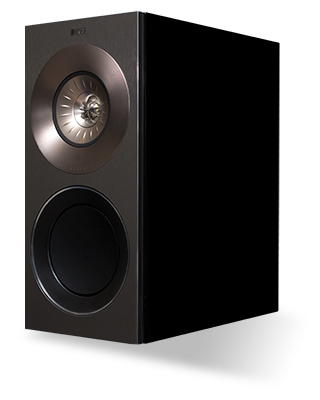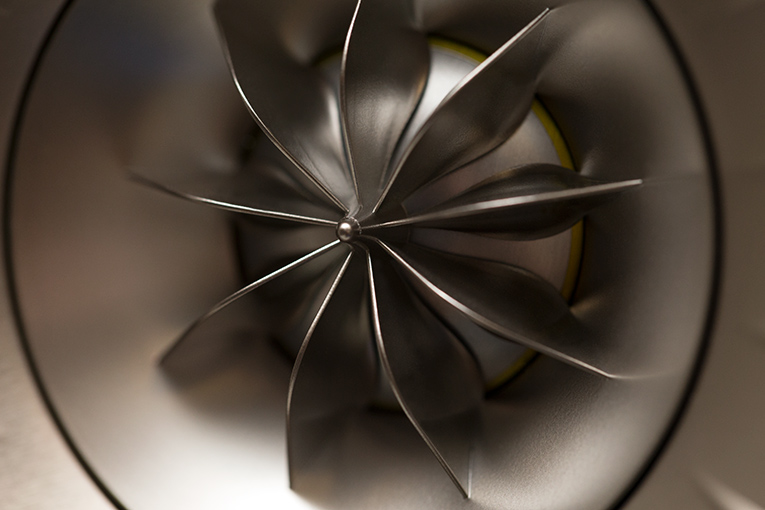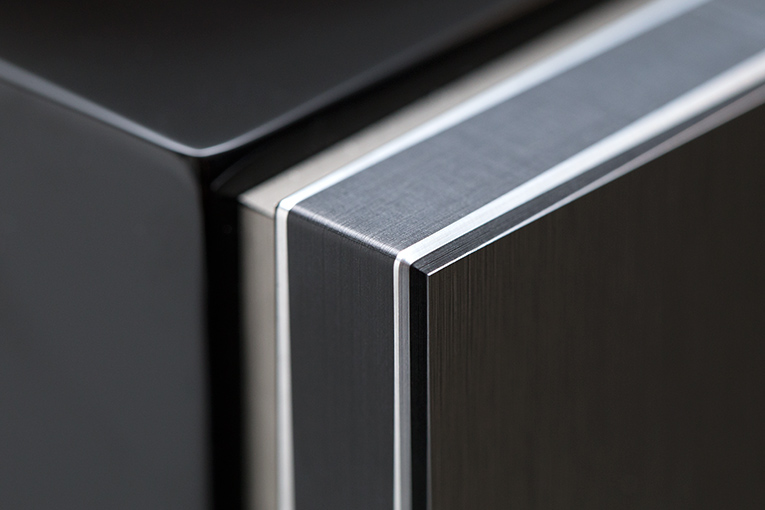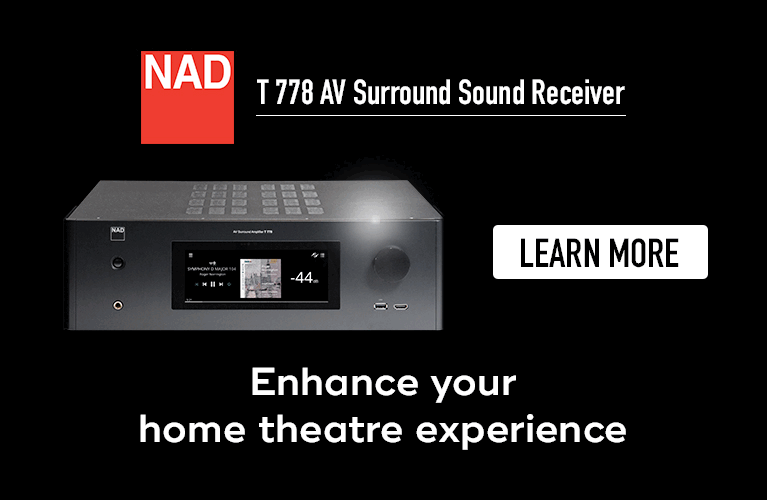
 When KEF introduced its new Reference loudspeaker models at High End 2014, in Munich, the sight of their conventional-looking rectangular enclosures took most showgoers by surprise. KEF had seemed to be pushing the envelope of cabinet design with the release, in 2011, of its decidedly unconventional Blade loudspeaker. Yet it was because of the Blade’s avant-garde shape that KEF chose to style the new Reference series conservatively -- as Doug Schneider said in his review of the Reference 1 ($7499.99 USD per pair), published on this site on December 15, 2014, KEF wanted to offer models “more typically styled to appeal to those who want to have something that looks more like a classic loudspeaker in their living room, not a sculpture or an industrial-design statement.”
When KEF introduced its new Reference loudspeaker models at High End 2014, in Munich, the sight of their conventional-looking rectangular enclosures took most showgoers by surprise. KEF had seemed to be pushing the envelope of cabinet design with the release, in 2011, of its decidedly unconventional Blade loudspeaker. Yet it was because of the Blade’s avant-garde shape that KEF chose to style the new Reference series conservatively -- as Doug Schneider said in his review of the Reference 1 ($7499.99 USD per pair), published on this site on December 15, 2014, KEF wanted to offer models “more typically styled to appeal to those who want to have something that looks more like a classic loudspeaker in their living room, not a sculpture or an industrial-design statement.”
But in the case of the Reference 1, “conventional” doesn’t mean “pedestrian”; in fact, quite the opposite, given the technology it contains. Whereas most stand-mounted speakers are two-ways, the Reference 1 is a true three-way employing the newest version of KEF’s advanced Uni-Q driver technology -- a 1” tweeter sunk into the throat of a specially shaped 5” midrange cone -- and a newly developed woofer with a very shallow 6.5” cone. The woofer is crossed over to the midrange at 350Hz, and the midrange to the tweeter at 2.8kHz. Each speaker’s rolloff characteristics, and thus its bass depth and character, can be adjusted with the user’s choice of port tube: a long and a short tube are provided. (Doug tried the speakers with both tubes, but settled on the longer ones because of the way they worked in his room.)
The Uni-Q array features what KEF calls a “tangerine” waveguide (KEF’s quotation marks) -- the finned piece of metal placed in front of the tweeter. This has three purposes: to provide gain and control dispersion for frequencies near the top of the audioband, and to help subdue the natural breakup mode of the tweeter diaphragm, which occurs much higher in frequency, far beyond the audioband. The Reference 1’s sizable cabinet -- it measures about 17.2”H x 8”W x 15.25”D, excluding connectors and optional grille -- is sturdy, expertly finished, and replete with an aluminum-composite front baffle, which is new for KEF. Between this baffle and the cabinet proper are damping pads; inside, metal rods extend from the front baffle to the rear panel to hold everything firmly in place.

Where these technologies and the designers’ expertise prove themselves is in the sound. In his review, Doug describes the Reference 1’s “ superbly clean, extended highs; tight bass reaching down to just above 40Hz; midrange smoothness and clarity to die for; across-the-board neutrality; and superior coherence of the three drivers’ outputs throughout the audioband, with no audible indication of where the woofer’s duties ended and the midrange’s began, or when the midrange handed off to the tweeter.”
The Reference 1 also proved capable of providing state-of-the-art resolution, as Doug discovered: “even though the [Revel Performa3] F206 [$3500/pair] displayed top-drawer clarity and definition throughout the audioband, particularly in the midrange (nothing short of amazing for the price, really), the Ref 1 sounded slightly cleaner, and was capable of even greater resolution overall -- so high that I’d be comfortable pitting the Reference 1 against any speaker of any price or size. Magico’s S5 ($29,400), Polymer Audio Research’s MKS ($42,000/pair), and Sonus Faber’s Olympica III ($13,500/pair), all of which I’ve reviewed in the last year or so, all went deeper in the bass, but revealed no more detail in recordings from the midbass up than did the Reference 1.”

Commensurate with the Ref 1s’ high resolution were their topflight soundstaging and imaging. Doug heard “outstanding width, tremendous depth, and, most notably, superb precision within the stage.” He attributed these attributes “to the excellent coherence of the drivers’ outputs, the exceptional resolution, and, of course, that Uni-Q coincident driver, which delivers the mids and highs from a single position.”
Finally, Doug homed in on the Reference 1’s ability to play exceedingly quiet, but also “astoundingly loud -- far louder than the Revel Performa3 F206es could ever hope to -- or any stand-mounted speakers I’ve had here. . . . [T]hey could probably play louder in my room than could even the Sonus Faber Olympica IIIs, Polymer Audio Research MKSes, or Magico S5s. But that’s just a guess; I didn’t push any of those speakers quite this hard, for fear of breaking something.” So while the Reference 1 might be a stand-mounted design, if you couldn’t see the pair playing, you might mistake them for floorstanders, given the scale at which they could play music.
KEF might have gone a more conventional route with the styling of the new Reference series, but there’s nothing typical about the Reference 1’s sound. In the final paragraph of his review, Doug stated that the Ref 1 was not only the best stand-mounted speaker he’d ever heard, but one of the best speakers of any type he’s heard: “As its name implies, the Reference 1 can indeed be considered a reference for stand-mounted loudspeaker design.” With that kind of praise, it should be no wonder that, this month, KEF’s Reference 1 is added to our list of Recommended Reference Components.
Manufacturer contact information:
KEF
Eccleston Road, Tovil
Maidstone, Kent
England ME15 6QP
UK
Phone: +44 (0)1622-672261
Fax: +44 (0)1622-750653
Website: www.kef.com






















